Kate Rolfe won the Student Illustrator of the Year Award in 2022 for an imaginative picture book that she called ‘Navigating Dyslexia’. The judges praised its humour, simplicity and ingenuity, and since it also won the World Illustration Awards, it has been turned into a book, coming soon.
Kate has had a busy and exciting 2023, so we caught up with her to find out what she’s been up to, as well as talk about her winning work and her practice as an illustrator.
When did you know you wanted to be an illustrator?
I have loved picture books all my life and read far more of them than I do any other books! I adore the picture book as an art form in which to express an idea within the bounds of a few carefully selected words and pictures – like visual poetry. I am inspired by the juxtaposition of words and pictures, so illustrating picture books feels like a natural place for my imagination to play!
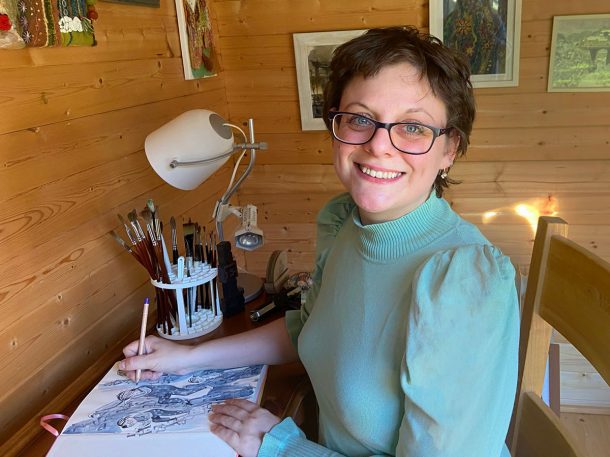
You made your artworks for ‘Navigating Dyslexia’ using cyanotype, which is unusual, and I usually think of it as a printing process. How did you do it and why did you choose the process for this work?
I did! I found a love for cyanotype during lockdown. My Mum and I decided to try it together while she was visiting me, and we both really enjoyed it. We became so engrossed in it that we barely did anything else for the whole week she was with me. Amazingly we still both use it in our own work today (she is a textile artist and uses it very differently from me). The cyanotype process has a good dollop of science and unpredictability, so it keeps me experimenting, guessing and testing new theories!
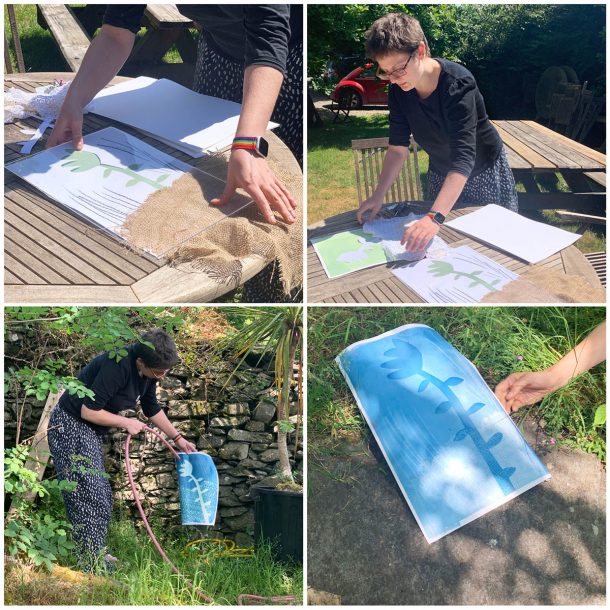
For ‘Navigating Dyslexia’, I tried using cyanotype in lots of different ways to render the letters and character, sometimes printing the letters first and cyanotyping over the top, using the printing ink as a resist, and other times cutting the letterforms from paper and letting the cyanotype expose their shapes. In the end I liked the bold pink letters of the wooden letterpress blocks, and used cyanotype for the character. I like that they feel as though they are from a different world – the dense, inky and brick-like texture of the letters creates a contrast with the watery and ethereal quality of the character.
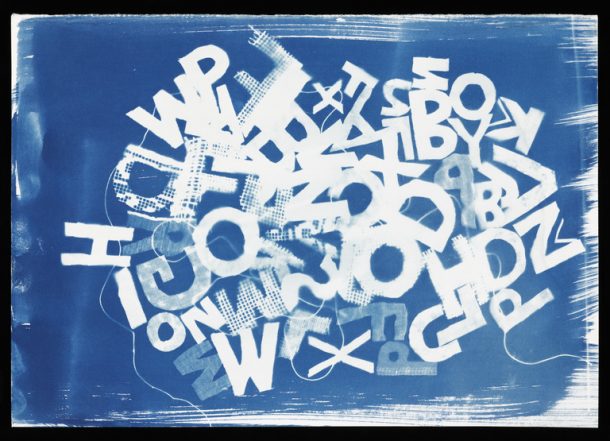
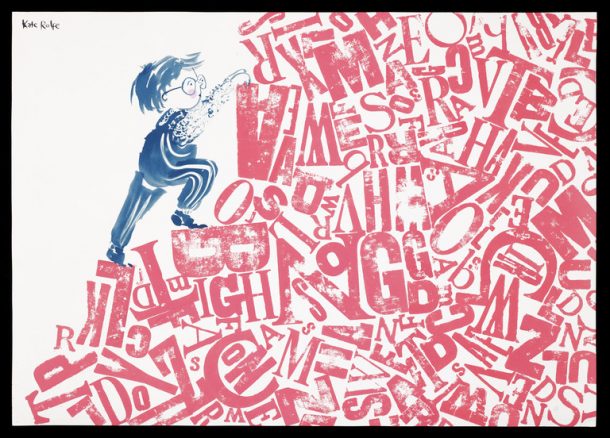
Is this becoming a trademark, or one of several styles that you use in your work?
I like to choose the medium to reflect the subject matter of each project, but cyanotype does feature frequently for me. I used cyanotype to create the illustrations in my first book, Wolf and Bear,as the story uses a metaphor of light and shadow to describe mood and mental health. How better to make the illustrations, than with a technique of literally printing with light and shadow!
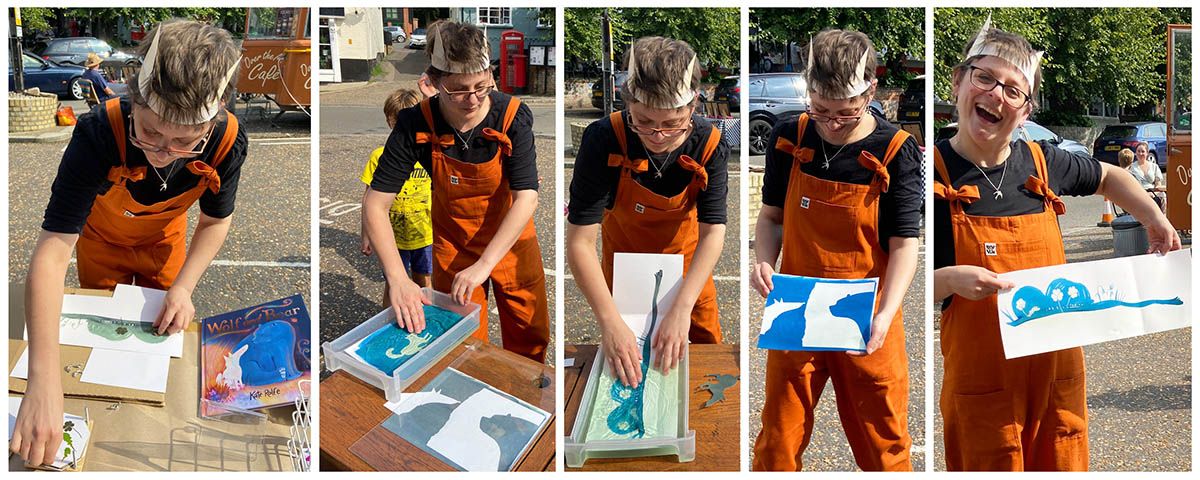
My second book, Wiggling Words, is closely inspired by my ‘Navigating Dyslexia’ series, and we have chosen to keep the look from that series when we make the book. So it will be a combination of cyanotype and hand-printed letterpress blocks.
I’m always exploring new ways of using different processes though, so I expect that my work will evolve in lots of directions!
Your concept for ‘Navigating Dyslexia’ is simple but ingenious. I have had the pleasure of seeing some of the early ideas and designs, which show a development of ideas on similar theme. Can you talk about how and why the ideas developed as they did?
Well I don’t think you would be surprised to learn that I began developing this project very soon after doing my Master’s dissertation! I have to admit I found the reading element of that to be a huge challenge and although I was given an incredible amount of help and support with it, I found it really very hard indeed. It was during the pandemic and I had very close working relationships with many of my peers, so I was able to see in stark contrast the difference between my experience of reading the texts, compared to theirs. I found that insight to be quite upsetting if I’m honest, and by the end of that module I felt pretty low! I really just wanted to create some cathartic work that got a lot of those feelings off my chest.
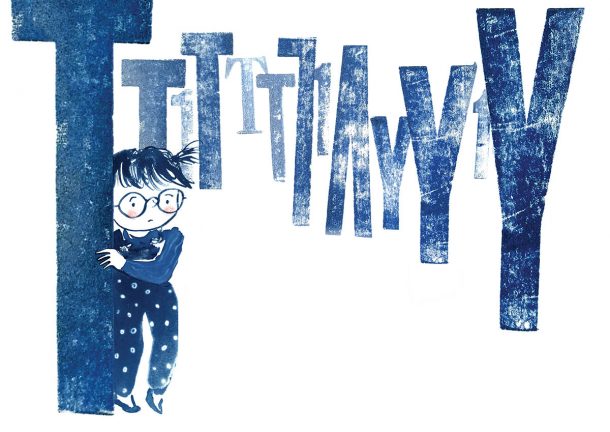
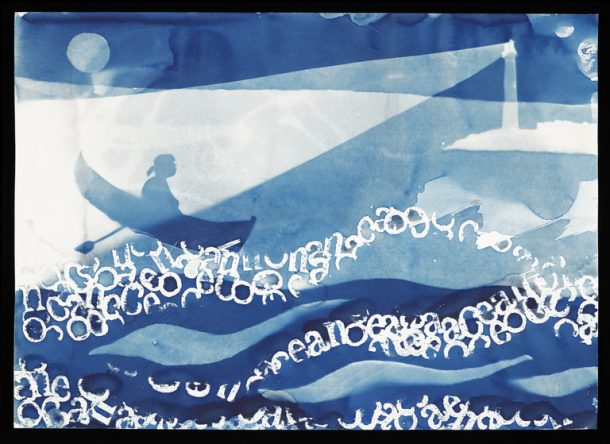
I almost didn’t make the work though, as the image of a child swamped by a pile of letters just seemed so obvious to me that it seemed pointless to make! In the end, I did start drawing those images and I discovered that a lot of people responded in a way I didn’t expect! I have been blown away by how many dyslexic people have reached out over the past couple of years to say that seeing the images made them feel that they could finally articulate how reading feels!
Every career develops differently and probably different paths suit different people. What do you see as the most fundamental advice you can give would-be illustrators?
Well, following on from the previous question, I’d say make the work and let everyone else decide! I almost didn’t make the dyslexia piece because I thought it was too obvious. That project taught me that if something feels obvious to you, it is probably because it is your authentic experience, and therefore it DESPERATELY needs sharing! I think it’s actually impossible to assess your own work, so just be yourself, make the work, and let the world respond to it. It’s never going to be exactly as you expect!
What next?
I’m very excited to be sharing Wolf and Bear at the moment, and the paperback is out in January 2024, so I will be enjoying sharing that with as many people as possible.
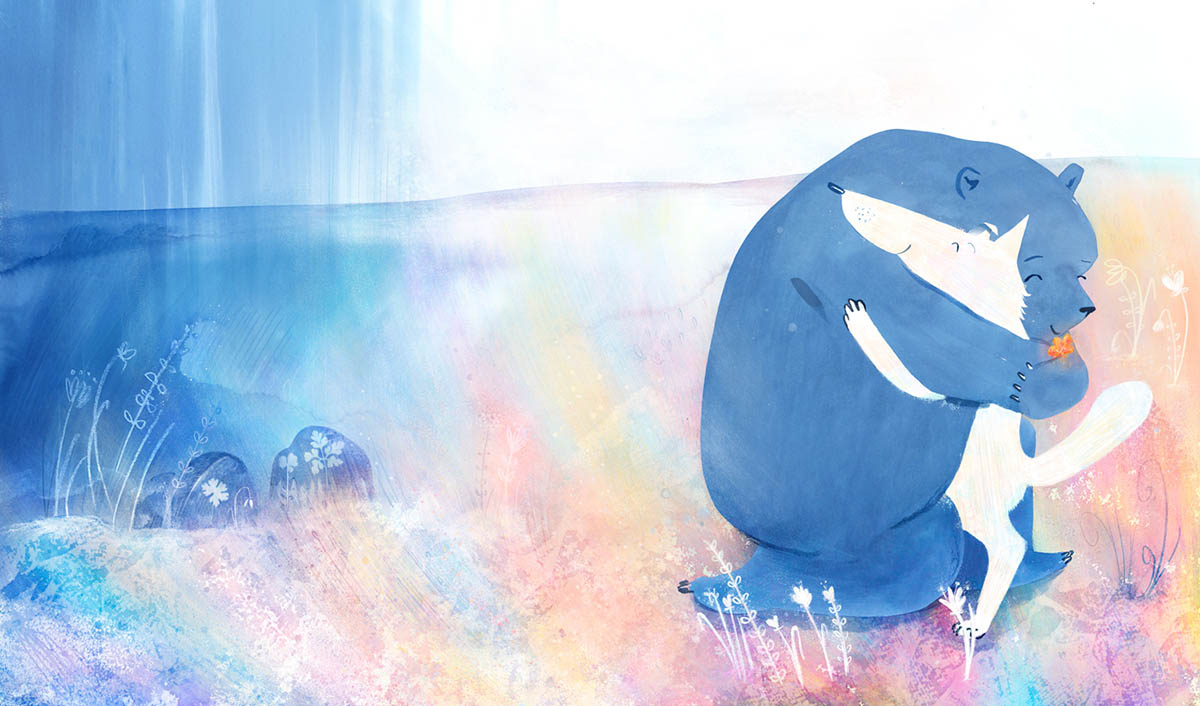
Then Wiggling Words is following later this year too, which is the picture book story version of what began life as the ‘Navigating Dyslexia’ work. ‘Navigating Dyslexia’ was very much about my struggle with reading, and while Wiggling Words begins with that struggle, I am really proud of how the story has developed to become an affirming adventure inside the brilliant mind of a child who thinks a little differently. It’s a real message of pride in my fellow neurodivergent thinkers, and I can’t wait to share it!



I loved reading this interview.
A excellent blog we need more like this :)